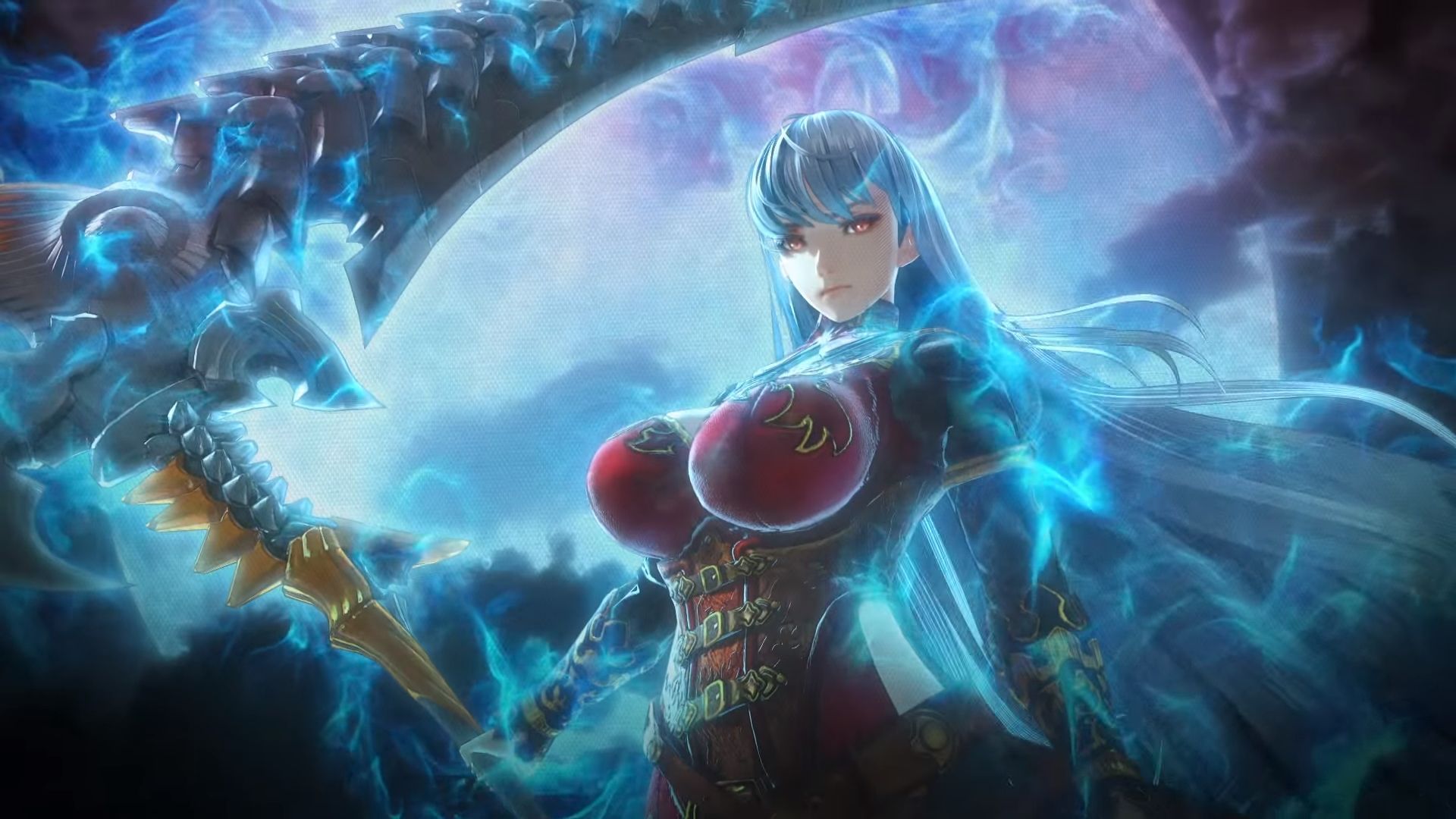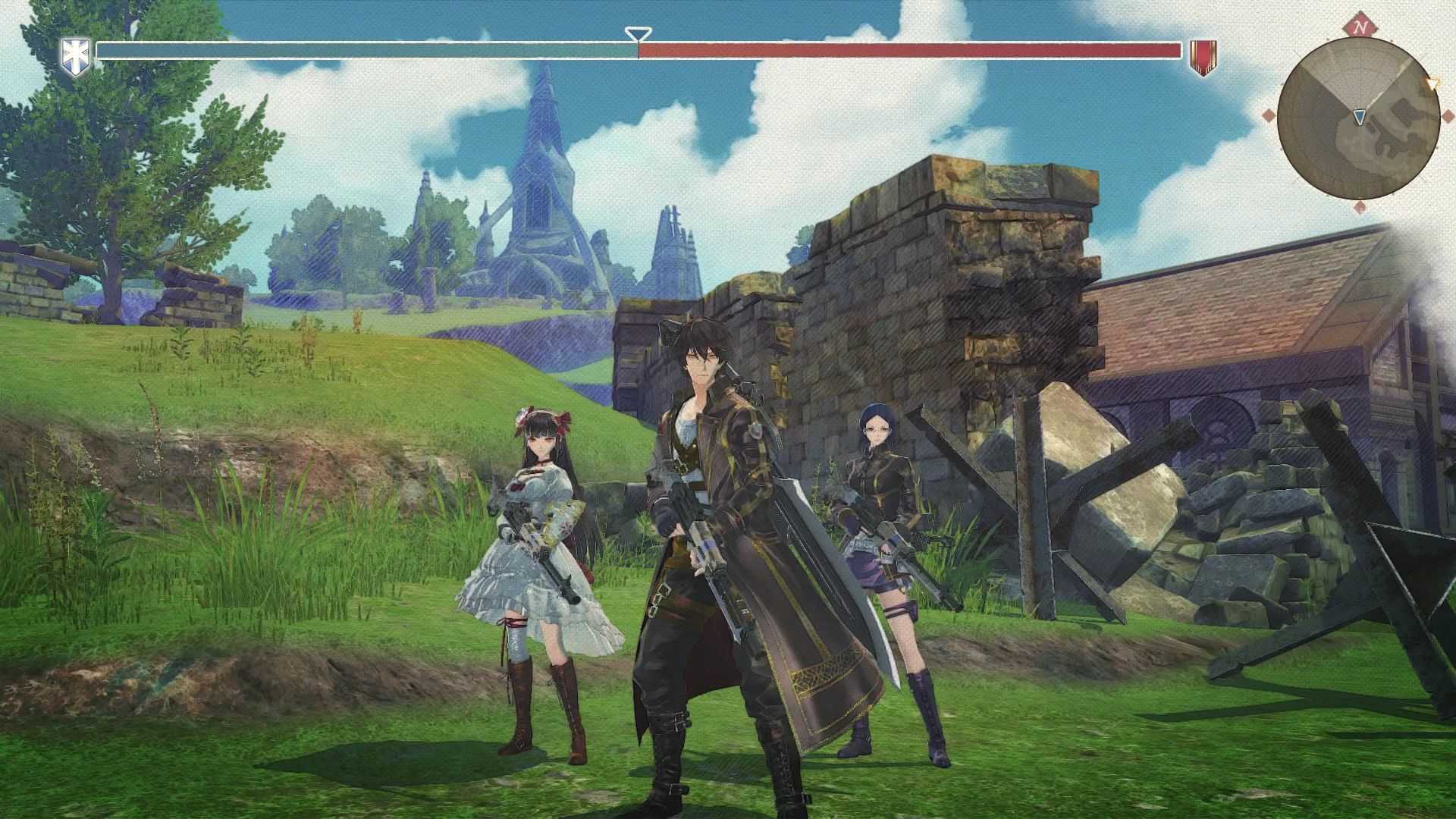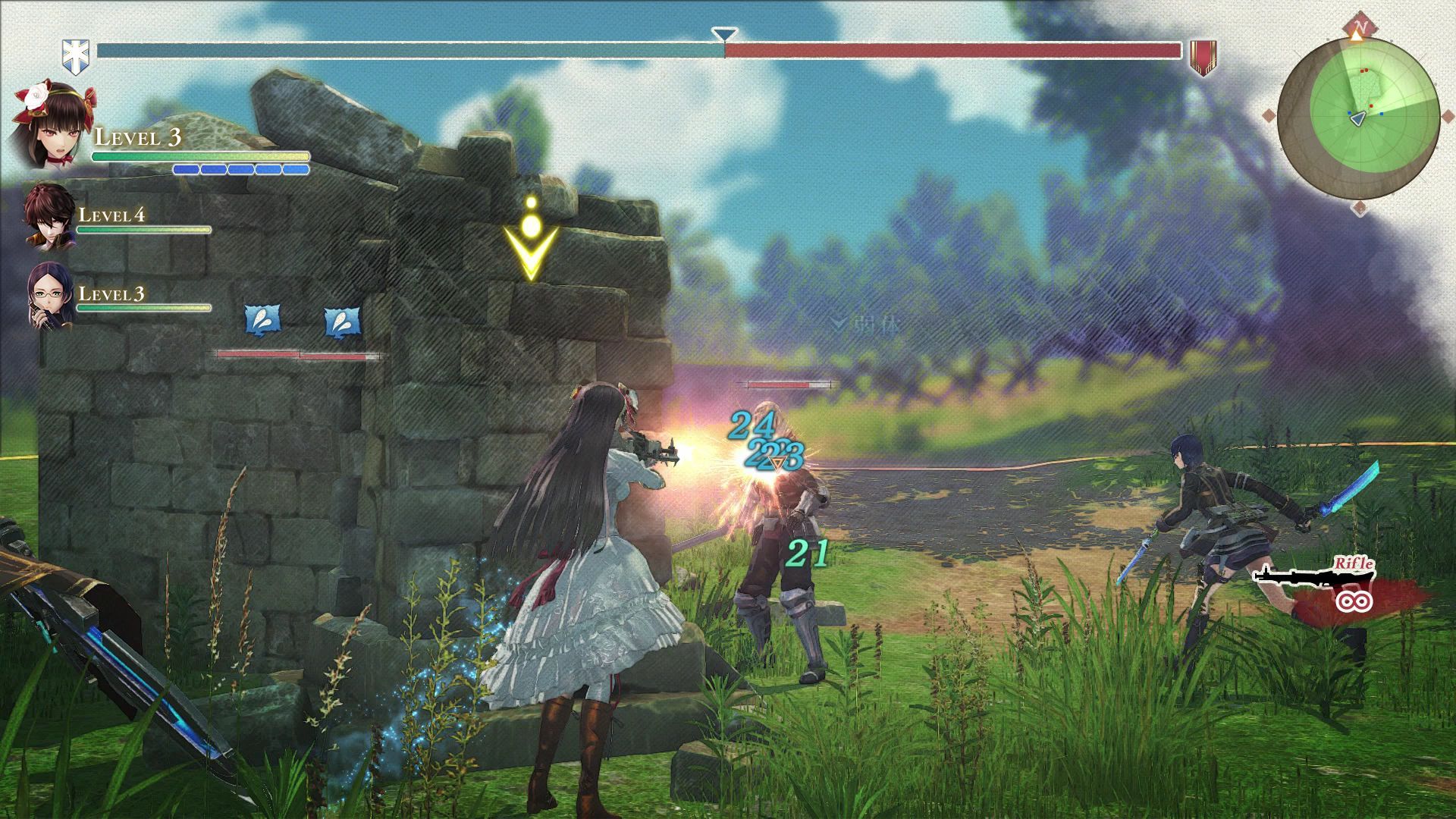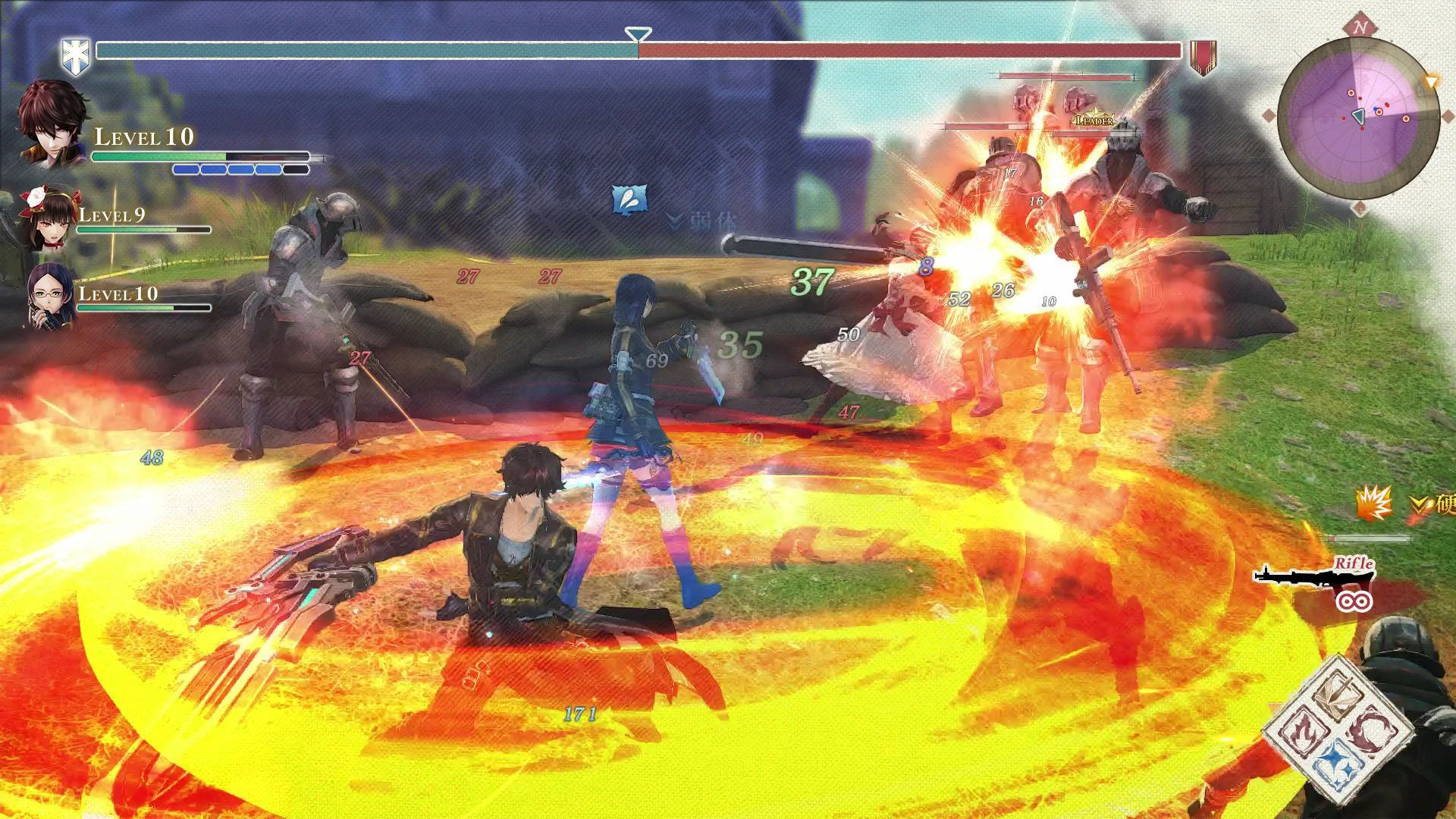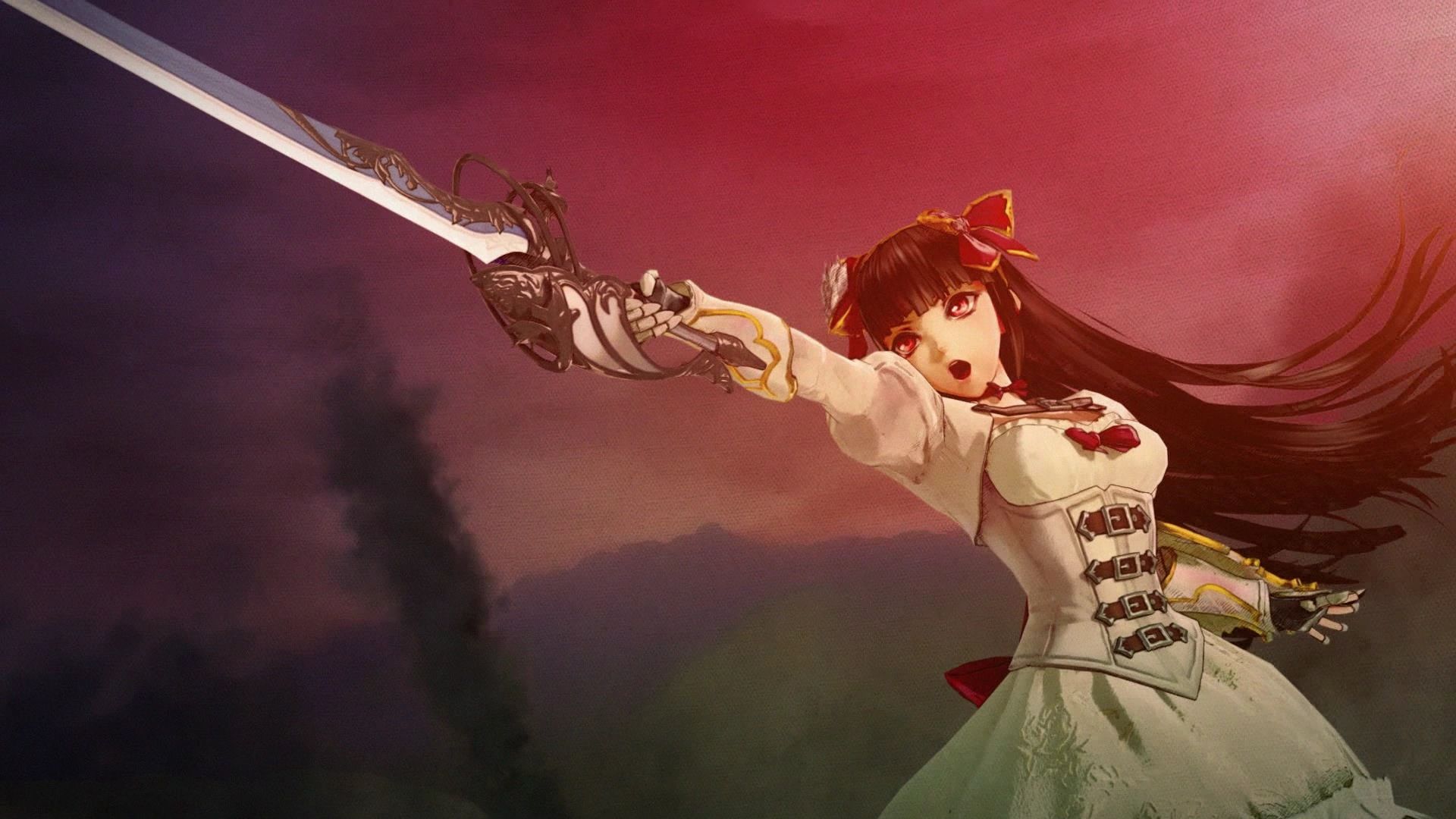The first demo of Valkyria: Azure Revolution has been revealed, and you probably already saw the videos. Yet, there's quite a bit more depth to this first taste of the game, than casually watching a video would reveal, especially in how the action RPG mechanics are merged with tactical elements.
Controls use nearly all of the buttons on the DualShock 4. The sticks take care of movement and camera, while the zoom is controlled by holding L2 and moving the right stick up and down. L1 brings up items and equipment when far away from the enemies and magic when in close combat. Selection is done with the face buttons.
Up and Down on the D-pad switch the active character (the other two are controlled by the AI), R2 locks on an enemy and R1 is used to shoot at your target. Square and Triangle trigger attacks in melee, circle makes the character crouch behind sandbags or hide behind wall corners, and finally X dodges when locked and rolls when not locked on a target.
The big elephant in the room, and what probably will be the toughest pill to swallow for veteran fans of the series, is the switch from strategy RPG to action RPG, but interestingly the development team retained a fairly deep level of tactical gameplay embedded in how the mechanics work.
Before you approach a group of enemies, you can engage them in ranged combat. You can either use your basic rifle, which has infinite ammunition but requires a brief reload after a few shots, or you can use ranged equipment.
Amleth is equipped with fragmentation grenades, Ophelia carries smoke grenades, and Brigitte has a lethal sniper rifle with very limited ammo. All three characters also carry potions for health recovery when not in combat.
In order to gain a tactical advantage from afar, you can either crouch behind sandbags for additional protection, or hide behind walls to launch a surprise attack. Enemies are also often protecting themselves behind sandbags, which can be destroyed with Amleth's grenades. Brigitte's sniper rifle also ignores them.
Attacks have the ability to cause different emotions in both enemies and allies, including surprise, impatience, anger and determination. Attacking from range in various ways (for instance with smoke grenates or from hiding) can cause detrimental effects on the enemies, and make them more vulnerable both to further ranged attacks and a melee charge.
After you have softened your enemies enough (you don't need to, but it's advisable), you can charge into close combat. When you do, the party and the enemy group get surrounded by a circle limiting the battle (I like to think of it as representing a single turn in a strategy JRPG) and four situations may occur: good situation, bad situation, close combat battle or enemy link.
If you have taken your time to put your enemies in detrimental emotions, you'll have a good situation, giving you the advantage in battle. Bad situation is the opposite, and seems to also happen when you're badly outnumbered. Close combat battle is a neutral situation, and link happens when you attacked an enemy group too close to another, causing both to enter combat.
Emotions are one of the pivotal elements of the game, and change dynamically with basically every action on both allies and enemies. Causing the right emotions in the enemy you're facing, or switching to already shaken enemies at the right time, can have a very relevant effect on the outcome of each encounter.
Using magic consumes Ragnite energy, but lets you unleash powerful attacks that are different for each character. Energy gets replenished by attacking normally.
Amleth has a short range burst of flame, a charging sword strike, and a large point-blank area attack around him. Ophelia has a sword lounge, an ice storm that can be directed in mid-action by turning her around, and a whirlwind attack. Brigitte has a frontal attack that staggers the enemy, a long range lunge with her daggers, and an point-blank area electrical stun. In addition to this, all characters have a healing magic that also creates a pulsing healing area for a short period.
Combat is fairly fast paced, but not twitchy, giving the player more than enough time to plan ahead and use the right attacks at the right time. Character switching is very seamless, allowing you to attack continuously without any pause while moving from one character of another. This can be used very effectively to chain magical spells from different characters in order to maximize the use or Ragnite energy.
Once all the enemies of a group are defeated, the circle is removed and the player can continue to the next encounter. If a character is downed, you have a quite forgiving timer that lets you rescue him. If you don't, he'll be lost. This may seem like it makes the game easy, and to an extent it does, but especially when outnumbered, things can go downhill rather fast when characters are downed in sequence.
The boss battle at the end of the demo is fairly straightforward, with a spider mecha that can be staggered by hitting its legs, exposing its Ragnite core. The cycle has to be repeated several times to destroy it. While its attack patterns are fairly predictable (albeit powerful), this leaves lots of potential for more complex boss fights in the final game.
The combat system can safely be defined "easy to use and hard to master." During easy encounters you can simply use basic attacks to mow through the enemies, but when larger groups are involved, especially when equipped with shields, an approach based on careful preparation and skillful use of magic, equipment and emotions, yields massively improved results. This is where the potential of the game's mechanics appears to be.
RPG elements are very basic in the demo. Characters level up, but there's no customization to be done for the moment, and the UI doesn't really explain what leveling up affects.
Incidentally, visuals are great, especially thanks to the art direction that will prove familiar to Valkyria fans. The Gouache rendering engine gives the demo a really unique look, even if the painterly filter might be a bit to strong for some (personally, I love it).
On the other hand, collision detection between characters is missing, and it would probably improve the game if implemented. Animations could also use more attention in how they're chained to each other.
Sound needs more work, with the effects for footsteps and shooting being the main culprits, and probably placeholders. On the other hand, the music tracks included in the demo are awesome, but this should surprise no one, considering that we're talking about the work of Yasunori Mitsuda.
Last, but not least, the demo is very linear, basically providing a sequence of encounters from one end to the other of the map with no real deviation. Hopefully this won't translate into the final game, but the development team already mentioned that this first demo was focused on familiarizing players with the combat system, so a linear approach was to be expected.
The demo of Valkyria: Azure Revolution is a true revolution for the glorious Valkyria series. It drops the turn-based mechanics, and this might turn off some. Yet, the combat system has depth and weight, and calls back to the older games by favoring a tactical approach to combat, instead of just button mashing your way to victory.
Ultimately, it's a lot of fun to play, and the new approach is very, very promising (and I say this as someone who absolutely loves turn-based strategy JRPGs). Of course, we'll have to see if the developers will manage to flesh out the LeGION system to create something really special, like BLiTZ was. The potential definitely is there, especially if the RPG and customization elements will be strong enough.
With at least ten months to go before the Japanese release, and a new demo coming this summer, we can say so far, so good.

